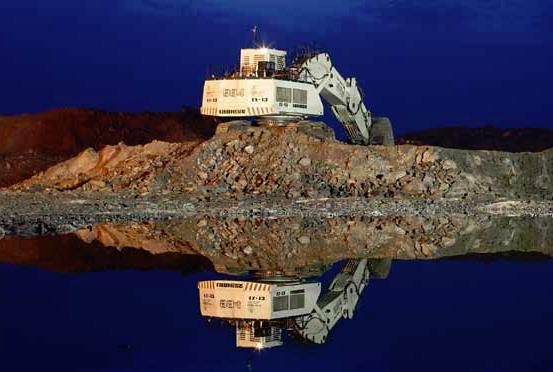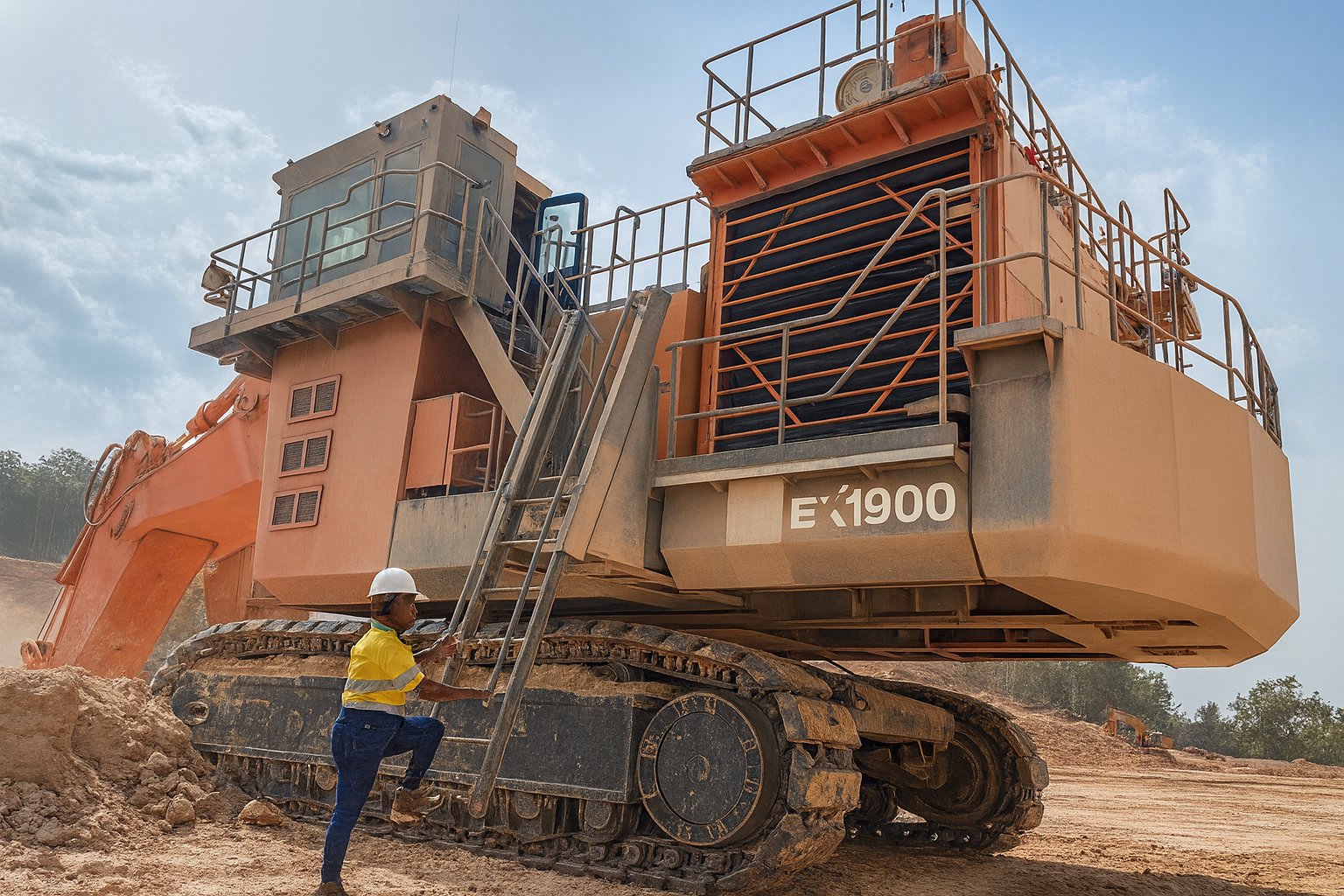
As development at the South Deep mine in South Africa continues to advance, Gold Fields plans to ramp up production and reach full capacity by 2014. If things go according to plan, South Deep looks set to become one of the world’s most productive gold mines.
The Witwatersrand, a low range of hills running in an east-west direction through the state of Gauteng in South Africa, is legendary in the global story of gold mining. The great Witwatersrand Gold Rush of 1886 was just the beginning of a series of events that established the region as one of the world’s most productive, responsible for some 40 per cent of the gold mined worldwide. Often referred to as the Rand, the region has also become deeply woven into the fabric of South Africa’s national identity, so much so that it has even given its name to the country’s currency.
Interestingly, Witwatersrand is an Afrikaans word meaning the ‘ridge of white waters’, and although its hills are modest in size, they are geologically rich and complex, and form an important continental divide. Rain run-off to the north drains into the Limpopo River and the Indian Ocean while to the south it flows into the Orange River and the Atlantic Ocean.
Gold Fields, the Johannesburg-based international gold mining company with interests in South Africa, Australia and South America, knows that the Witwatersrand Basin remains the most significant gold depository in the history of mining and has a great deal still to offer. Gold Fields is currently heavily involved in developing the South Deep project, which it believes is one of the greatest underdeveloped ore bodies in the world.
The South Deep property comprises some 3,566 hectares of land and is located on the north-western rim of the Witwatersrand basin, tapping into two rich gold-bearing mineralisations—the upper Elsburg Reefs and the Ventersdorp Contact Reef (VCR). The latest exploration results from the area confirm mineral resources of some 78.2 million ounces of gold, reserves of 29.3 million ounces and a mine life currently estimated at 43 years.
Of the two ore bodies, the main target is currently the Upper Elsburg Massives zone which lies at a depth of 2,500 to 3,500 metres. In order to extract ore safely, efficiently and cost effectively at these depths—in other words from large excavations at close proximity—the company has elected to employ specialised de-stress mining methodology. The use of this methodology is expected to significantly speed up the rate at which the ore body can be opened up, and the company is planning to apply it to more than 60 per cent of its production area at South Deep. Historically this was done through conventional mining techniques, but due to low face advances, de-stress mining is now also done using mechanised mining techniques.
A key element of the development strategy is therefore to migrate from traditional mining methods to full mechanisation. As part of this strategy, the company is in the process of setting up a specialist onsite training facility equipped with simulators to up-skill the workforce. Mechanised production began in 2007 and is now responsible for the output of some 247,000 ounces of gold per annum.
Since acquiring the mine in December 2006, Gold Fields has taken significant strides to improve and develop the site. Firstly, a major surface exploration programme at the South Deep Phase 2 and at the adjacent Uncle Harry’s Ground commenced in 2007, along with underground drilling and seismic remodelling, and these efforts have been increasing year-on-year.
Comprehensive and intensive remodelling of the ore body has significantly improved the grade and tonnage definition for the project, and as a result the company has been able to improve the design and scheduling of the mine. In parallel with this, a comprehensive development and construction plan has been launched, and this will ensure that production is ramped up to a maximum annual output of between 750,000 and 800,000 ounces of gold by the end of 2014.
As part of this five year plan, the existing gold processing plant, which has been operational since the mine opened in 1990, is to be expanded and will ultimately have the capacity to process up to 450,000 tonnes of ore a month. Improvements are also being made to the two shaft systems which provide access to the ore bodies, and are linked underground. The mine’s original South Shaft complex is currently being refurbished and when fully commissioned in mid-2014 will be capable of hoisting 120,000 tonnes a month.
The newer flagship Twin Shaft complex is undergoing extension. The main shaft of the complex is already fully operational and has a massive single drop of nearly three kilometres, making it one of the deepest mine shafts in the world. Meanwhile the ventilation shaft is currently being deepened to the same level and is being kitted out with lifting gear which should come into operation in 2012. When this work is complete, the Twin Shaft complex will have a combined hoisting capacity of 330,000 tonnes a month.
Work is also well underway on a new full tailings backfill plant which will have a pipe distribution network of 24 pipes extending down the South Shaft. When this is commissioned in July 2011, it will replace the existing classified cyclone tailing plant.
All conventional mining at the VCR ore body, meanwhile, was suspended in 2008; but the plan is to return the reef to production at a later date, once the mine design and mechanisation plans have been completed.
This year, the planned investment into South Deep is likely to be in the range of R2 billion (US$273.2 million). And this level of capital investment is set to continue over the next four years as production ramps up to capacity. Meanwhile, the company is taking steps to obtain the mining rights to Harry’s Ground, a property which lies to the east of South Deep and contains inferred mineral resources of 14.6 million ounces that are accessible via the existing South Deep infrastructure.
“The scale of the South Deep ore body cannot be underestimated,” the company said in its latest annual report. “The addition of this mine to our production portfolio will help secure South Africa’s long-term role in our overall production portfolio—with commercial production expected to last well beyond 2050.”
Aside from operational issues, Gold Fields is a benchmark in the industry for its commitment to the environment and to the local communities in which it operates. “Sustainable development is not new to us,” said Philip Woodhouse, head of sustainable development. “We have been investing in things like environmental education, socio-economic development and communities since the 1980s.”
From the corporate governance perspective, Gold Fields complies with two international standards: the King Report on Corporate Governance in South Africa 2002 and the Sarbanes Oxley act.
The main thrust of the company’s ethics and corporate governance policy, though, has been to set up its own code of ethics. “This has been in place for quite a few years,” Woodhouse explained. “It spells out the behaviour we expect from our employees and aims to ensure they act in a manner beyond reproach.” The code provides user-friendly guidance on how employees should deal with all issues to ensure ethical behaviour.
Policing behaviour is not always easy, though. “To support that, we make use of an independent third party tip-off provider,” Woodhouse explains. “So if anyone suspects someone is not adhering to our code of ethics, they can phone the hotline, which is anonymous. We investigate from there, and we have a whole protocol on how we investigate and close out on these issues.”
On the subject of human rights, Gold Fields has developed a range of general practice guides on issues as wide ranging as freedom of association and upholding the right for cultural difference. Many of the guides are also aimed at issues that are pertinent to specific locations. In Ghana, for example, illegal artisanal mining is prevalent, so a guide has been developed to provide ways of dealing with this.
As one might expect, Gold Fields also has a well established health and safety policy, along with the relevant supporting documents and framework. As part of this, it has gained OHSAS 18001 certification; and uses the health and safety management systems to drive the process of continual review and improvement. “We have, for example, put together a Safe Production Rules document, which states our golden rules—the rules you just don’t break. And in this case, they really are prescriptive. For example, wearing your personal protective equipment is non-negotiable—thou shalt!”
One of the key pillars of Gold Fields’ environmental policy and management system is ISO 14001 conformance, which is independently audited at each site; and there is a formal incident reporting process in place that reports regularly to the board.
Power consumption across the company, along with all the environmental initiatives, is reported to a sub-committee of the board known as the Safety, Health and Sustainable Development Committee. “This committee is responsible for ensuring we continue to live by our sustainable development policy framework,” explained Woodhouse. “One of the important metrics they monitor is how many gigajoules of energy we are using to produce an ounce of gold.”
Working with and within the communities in which it operates has always been one ofGold Fields’ strong points—it has a long history of building schools, upgrading roads and providing access to electricity, healthcare and clean water. But there are always new challenges. “If you can’t attract teachers to the area, the school just stands empty. So we also build living quarters for the teachers,” Woodhouse explained.
“In each country where we operate we’ve set up a foundation dedicated to socio-economic development within the community,” said Woodhouse. “For a percentage of profit and every ounce of gold produced we put aside funds, which are administered by a board of trustees and are used purely for socio-economic investment.”
Gold Fields’ approach to stakeholder engagement is open and transparent. “If people want to throw stones at us, we can only learn from that,” Woodhouse said. The company’s policy is to engage with local communities at the earliest opportunity and then maintain that engagement throughout the time it is operating in the area. Even at early exploration level, as soon as geologists report that a site might be suitable for mining, the community affairs specialists move in and begin meeting with the local community in a two-pronged process of discovering their expectations and educating them about Gold Fields. Then, once mining operations are established, the company continues meeting with committees from the local community, and holds forums to continue to discuss local issues and needs. All socio-economic investment is based on a comprehensive process of engagement.
The efforts of the last few years to formalise a diverse range of policies and processes into an integrated sustainable development strategy have certainly paid off. “Sustainable development is not a just a concept in Gold Fields—it is the way we do things,” Woodhouse concluded.



 GOLDfields_southdeep_MAY11_emea-bro-s.pdf
GOLDfields_southdeep_MAY11_emea-bro-s.pdf








